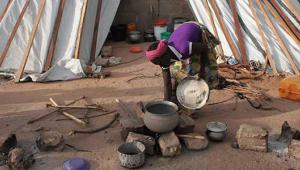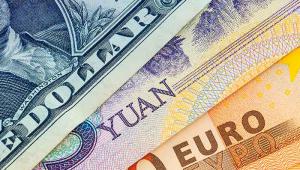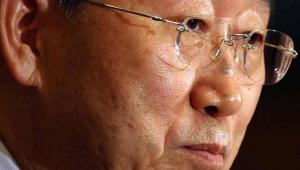There are probably few things that unite Pope Francis and One Direction, but endorsement of 2030 Agenda for Sustainable Development is one of them.
Seventeen Sustainable Development Goals – or Global Goals as they are also termed – will be formally adopted at the special United Nations summit in New York on 25 September, heralded as the largest meeting of global leaders to ever take place. The Pope is set to address the event, and famous faces from Robert Redford and Jennifer Lopez to Stephen Hawking and Malala Yousafzai have lined up to add their support.
The SDGs usher in the next 15-year era in development. They succeed the Millennium Development Goals, adopted in 2000, which were the world’s first attempt at setting some global benchmarks to eliminate poverty, hunger and disease.
While the MDGs have achieved some significant successes – MDG 1, to halve the rate of extreme poverty, was met five years early in 2010 – progress elsewhere has been patchy. Despite this, development experts agree they have succeeded in driving development forward with speed and focus the world had not seen before.
“[The MDGs] really forced the global community to track progress against measurable targets and helped highlight why we’re falling short,” says Tony Pipa, the US’s special co-ordinator for the post-2015 development agenda.
Over the past three years, he has been one of many development policymakers who have been engaged in dialogue with emerging and developing nations on how to take the agenda on for the next 15 years.
There were only eight MDGs, which were discrete and largely restricted to social outcomes such as universal primary education and improved maternal health.
The SDGs, by contrast, are broader, deeper and more inter-connected; the 17 goals are underpinned by 169 individual targets, compared to just 21 targets that sat behind the 8 MDGs. While social goals focused on poverty eradication, good health and access to education remain, the framework also reflects the importance of economic development. Goal 8 instance focuses on work and economic growth, while Goal 9 targets industry, innovation and infrastructure. There’s also a greater emphasis on sustainability in all its forms, from sustainable living and consumption to marine conservation and land management.
John McArthur, a senior fellow at the UN Foundation and former deputy director of the UN’s Millennium Project, says recent progress on eliminating poverty and improving child mortality has been remarkable. There has been “the fastest rate of progress in history, in tackling these very basic human needs around the world”, he says.
But this success has brought new problems in its wake. “For all those economies that are growing, all these societies that are making tremendous economic progress, they're doing so with the corollary of pumping our carbon into the atmosphere,” McArthur explains.
“That's a problem that we have to take on next, and we have to not just to solve the problem, but change the way we do business.”
Nor were the MDGs very successful on the environmental front. “They did not include things like oceans, which is so fundamental. They did not include climate. They did not include things like inequality, which to many of our surprise has become one of the single most salient, critical issues in all corners of the globe.”
McArthur notes that, while 17 might seem like an awkward number, this reflects the complexity of the problems that needed to be tackled. “The world is complicated. You can’t pretend to oversimplify the challenges in front of us.”
The SDGs should also usher in a more integrated approach. One lesson that has emerged from the past 15 years is that development outcomes are interconnected, not discrete. For example, the number of girls staying on at school into adolescence is correlated with lower rates of HIV/AIDS, Pipa observes. “Understanding that, and programming and thinking about strategically how we do that is extremely important in this agenda, and a big difference from the Millennium Development Goals.”
Few would dispute that the sustainable development agenda is a noble and admirable one, but how deliverable will it be?
In the UK, the Overseas Development Institute has produced research that tempers any sense of utopianism with a sharp dose of reality. ODI researcher Susan Nicolai warns that, at current rates of progress, none of the goals look fully attainable.
Of the 17 goals, 14 will require a “revolutionary effort”, she argues. And some goals – such as inequality, slum populations and climate change – will particularly difficult, as trends are currently going in the wrong direction.
“Our research is a wake-up call for world leaders, highlighting the extra effort that will be needed to turn the SDGs’ idealism into reality,” says Nicolai.
“Our analysis shows countries can buck historic trends, with some governments already outperforming on key fronts like maternal mortality. But it will take an unprecedented, global collective effort to meet the ambition of the new goals.”
The scale and ambition will also require a new order of financing. McArthur estimates that between $1-2trillion of extra incremental investment is needed each year in order to meet the SDGs, something far beyond conventional government aid budgets. The private sector will need to step up and play their part and developing countries themselves will also play a role in nurturing and growing their own resources.
“The best way out of poverty is inclusive economic growth, the leave-no-one-behind mantra,” says Pipa.
Success will require a “whole of society endeavour”. He cites the US’s Power Africa initiative, which is backed by $7bn in official development assistance and other public funding, but has succeeded in pulling in $32bn in other funds, of which $20bn has come from the private sector.
“When you’re looking at large-scale infrastructure like energy and bringing sustainable energy to people that don’t have it, you are going to need resources beyond what governments can provide. You can unlock it though multi-stakeholder partnerships,” Pipa explains.
He describes an emerging sense of collective action and shared responsibility. The three-year round of pre-SDG consultation and discussion revealed that developing countries want a greater sense of ownership of their own development.
“[They were saying] we are interested in leading our own economic transformation and doing the things necessary – both from a policy perspective as well as our own institutions, governance, and our infrastructure – to be able to really stimulate the kind of economic growth that will do the things that the SDGs lay out,” says Pipa.
The financing picture is already very different. He notes that, in the 1960s, 71% of the financial flows going to developing countries came in the form of grant aid from the rich world. “That number is now down to 9%, because you've had incredible growth of foreign direct investments. You've had the growth of philanthropic giving, and remittances. There's just a much greater mix of financial flows.
“Even over the last 10 to 15 years, the amount of domestic resources that developing countries have has almost tripled. They have more of their own resources and they’re continuing to mobilise more resources domestically. It does speak to a more nuanced and varied approach to how we use our official development assistance.”
Pipa predicts more innovative use of aid funds, with instruments such as loan guarantees playing a bigger role to catalyse other forms of investment.
“We're going to have to unlock the resources across many different sectors and maximise the impact of those resources for the sustainable development gains that we're putting out.”
The challenge, then, is enormous, but the rewards will benefit us all.
The Global Goals for Sustainable Development are:
1. No poverty
2. Zero hunger
3. Good health and wellbeing
4. Quality education
5. Gender equality
6. Clean water and sanitation
7. Affordable and clean energy
8. Decent work and economic growth
9. Industry, innovation and infrastructure
10. Reduced inequalities
11. Sustainable cities and development
12. Responsible consumption and production
13. Climate action
14. Life below water
15. Life on land
16. Peace and justice, strong institutions
17. Partnerships for the goals













